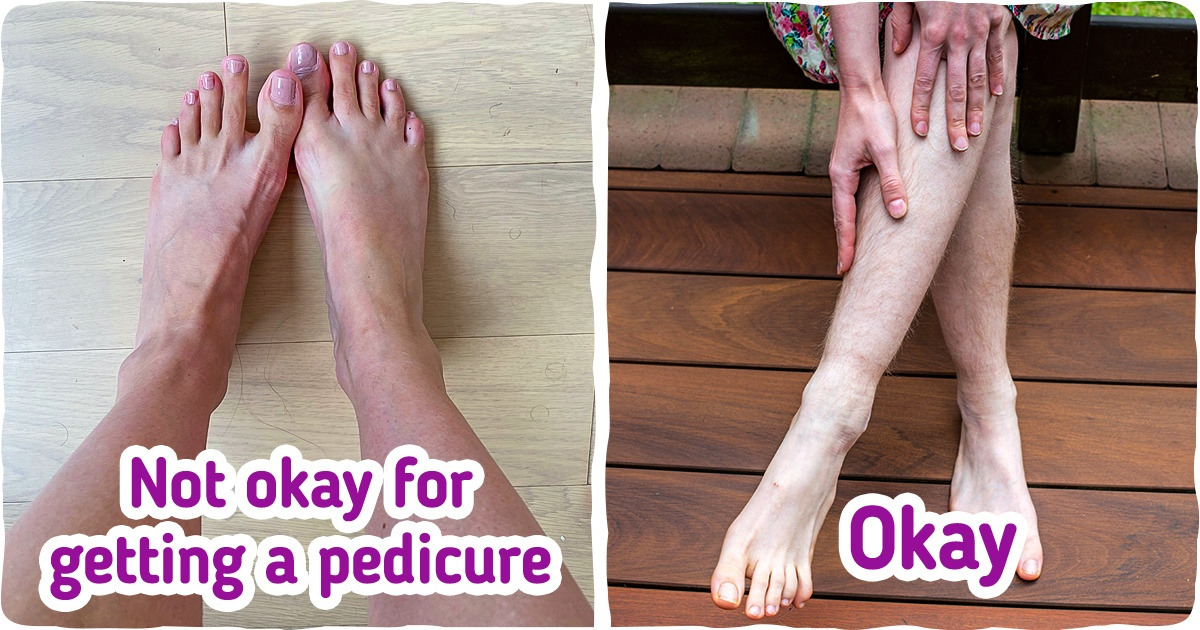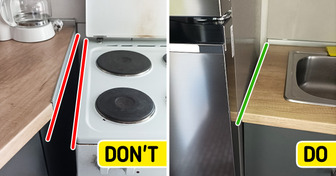20 Impressive Hair Transformations That Will Convince You to Get a Haircut Too


The necessity to get pedicures increases in the summer when we trade out our close-toed shoes for summer sandals. However, it’s important to make sure you choose a professional who won’t do any harm to your feet, keeping them healthy and well-groomed. In order to find the right one, we decided to discuss how to take care of your feet properly, what procedures to avoid, and what things you should never do to your feet.
The baby toes take on enormous pressure — from both the body and shoes. Many people get a kind of “hood” on these toes that appears due to protecting them from external factors. If you remove this hood, you can end up provoking an even greater growth of tissue due to accelerated regeneration after this action.
In order to make these toes look more aesthetically pleasing, you need to contact an orthopedist, pick up individual insoles, and soften the growths with a keratolytic agent.
Apart from the usual types of pedicures (classic, with tools, and combined), today, a new type is gaining popularity — the acid pedicure. It includes treating the feet with the help of special cosmetic items and acids. Professionals prefer it for several reasons.
Many of them don’t like the classic pedicure that involves soaking the feet in water — it’s easy to injure the softened skin because it’s not quite clear how much-keratinized skin has already been removed. A pedicure involving tools doesn’t remove all the calluses and corns as the practice shows. Moreover, both types of pedicures cause microtrauma to the feet. As a result, the skin starts to regenerate and the stratum corneum quickly grows again.
The acid pedicure lets you remove dead cells effectively for a longer period. However, this method has a drawback as well, as it’s typically more costly than other types of pedicures. In addition, you need to carefully study the composition of the agent before using it and check to see its effect on small areas of skin so you don’t have an allergic reaction or any other negative consequences.
“Heels like a baby” are achievable, but they are absolutely unnecessary. The pedicure technician can remove all the keratinized skin and make the feet smooth, but then walking will most likely become painful for you. Therefore, it’s better to leave a slight roughness than to remove everything completely.
There is a clear signal as to when the tech should stop filing — once your heel starts to feel it. Throughout the entire procedure, the file should be felt as if it were being done through a thick sock.
Ideally, toenails should have a square shape with rounded corners. This means the outgrown nail should be cut in a straight line and then the corners can be slightly rounded. One shouldn’t go for a semicircle shape on the toes — it’s one of the causes of ingrown toenails. At the same time, make sure to not leave the corners too sharp, as they will cling to your shoes, which can lead to injuries.
One also shouldn’t leave the toenails too long — this can also contribute to traumatizing them, which results in the appearance of longitudinal cracks. Sometimes, nails crack from the very root along their entire length. It’s impossible to do anything about this type of trauma.
Sometimes things that look like cracks are not actually cracked at all. These can be natural grooves that often appear on very thick nails. The pedicure technician will assess the condition of the toenails and either select the right corrective coating or advise you to consult a podiatrist.
Most experts agree that the cuticle shouldn’t be cut off, but should instead be pushed back with a metal or orange stick. This is because the cuticle is a natural protective barrier for the nails, without which an infection can penetrate under them. You should only trim off burrs or heavily overgrown areas that can be scraped and that don’t cause pain.
The French pedicure master, Bastien Gonzalez, gave some unexpected advice: Use a toothbrush instead of a stick for pushing back the cuticle. Its soft bristles gently push back the cuticle, guaranteeing that the nail isn’t pushed too hard and doesn’t end up with ugly bumps on it.
Experts advise not shaving your shins for at least 24 hours, but preferably, 48, before getting a pedicure. When you shave, microtrauma can appear on the skin, which can result in an infection at the salon.
Also, experts recommend not doing something that many shy people do — cutting the toenails and filing the heels at home in order to not be embarrassed in front of the professional later. It’s better to come to the salon with nails that are grown out and with unfiled heels. It will help the professional attain the necessary shape for the toenails and prevent them from removing any extra stuff from the heels.
There are numerous procedures that salons oftentimes offer to their clients that aren’t actually effective and might also harm your feet. For example, there is no evidence that gelatin or wax foot masks are beneficial, though many people are still convinced that they make our nails stronger. Moreover, even nail polish containing strengthening ingredients can do harm, like increasing the hardness of nails and leading to breakage.
The fish pedicure, for example, can lead to the detachment of the nail plates. Initially, this procedure was used by people with psoriasis, as it was giving users tangible results in this case. But if you don’t have this illness, then you’d better not risk it at all.
Many women have their own set of professional tools and pedicure accessories that they bring to the salon. Of course, good professionals watch the cleanness of their tools and disinfect them. Nevertheless, according to experts, the risk of getting a fungus or any other infection in the salon is still there. That’s why having your own personal set of tools seems to be a sensible idea.
The list of necessary items includes files and buffers, cuticle nippers, callous removers, cuticle nail pushers, toe ropes, and even cotton towels. By the way, it’s better to visit a salon in the morning because the chances that it will be clean are much higher.
Make sure the professional has a license or documents confirming their qualifications and experience. Check to see whether all the tools have been disinfected and ask them to remove previously used files and tweezers. Don’t feel shy about asking the tech to wash their hands or disinfect their tools in front of you. It’s also better to refuse to use the footbath since, as we have mentioned above, the professional can file off the extra skin on steamed feet. Moreover, foot tubs are oftentimes the dirtiest place in the salon.
Also, good techs usually ask their clients questions about their lifestyle, their athletic routine, the type of skin on their feet, and their home routine. It helps them to choose the optimal type of pedicure for you. If the professional is not asking you anything, don’t feel shy and tell them about these things yourself and make sure to search for another salon next time.
The author of this article liked the idea of visiting the pedicure professional with their own tools. What type of pedicure do you prefer? Do you go for trendy pedicure styles or are you more into the classic format? We’re looking forward to seeing your comments on the site.











